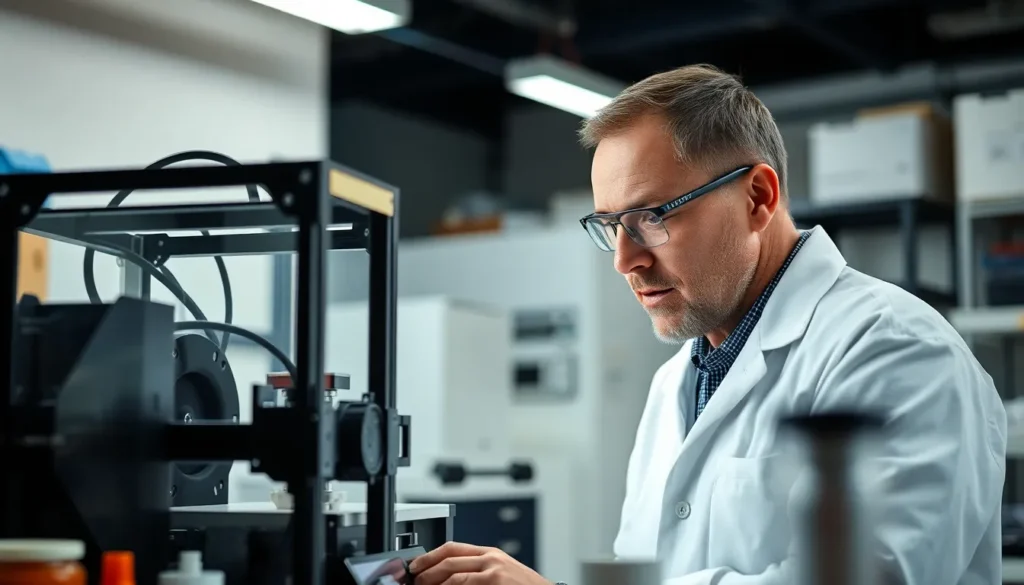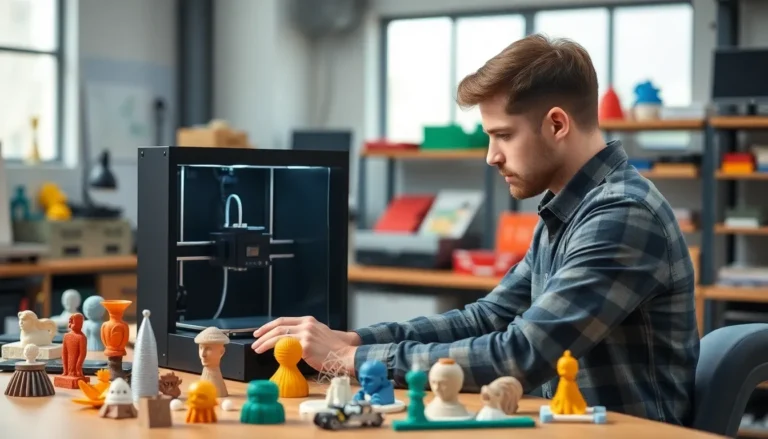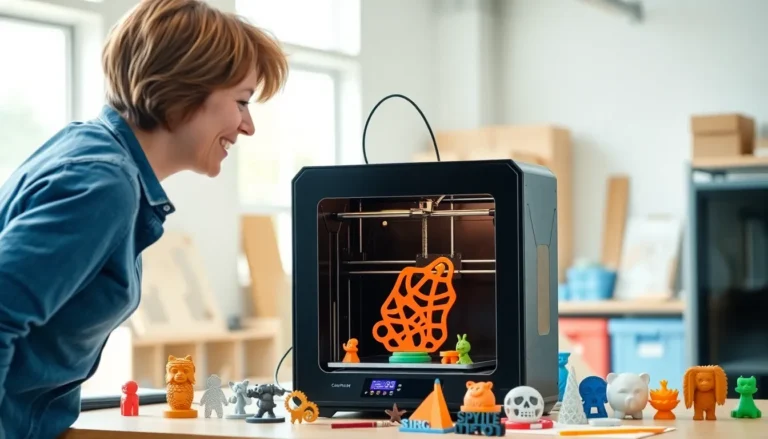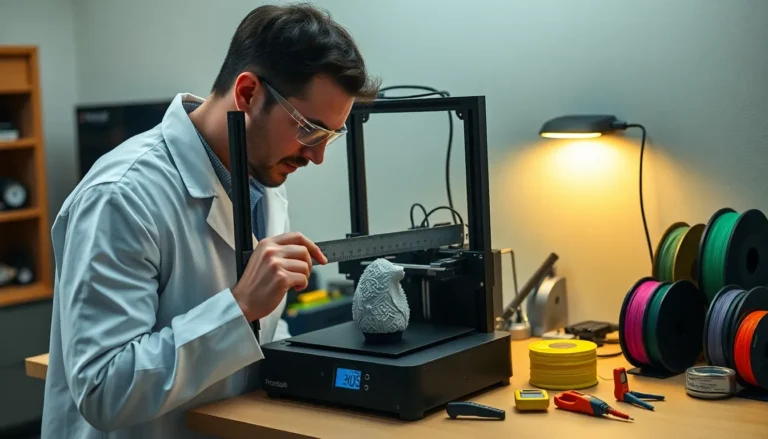Imagine a world where your wildest design dreams can come to life with just a click. Welcome to the age of additive manufacturing and 3D printing, where creativity meets technology and the only limit is your imagination. Whether it’s crafting intricate prototypes or producing everyday items, this revolutionary process is reshaping industries and redefining what’s possible.
Gone are the days of waiting weeks for a part to arrive or settling for cookie-cutter solutions. With 3D printing, it’s like having a mini-factory right at your fingertips. From aerospace to healthcare, the applications are as vast as they are exciting. So buckle up and get ready to explore how additive manufacturing is not just a trend but a game-changer that’s here to stay. Who knew innovation could be this much fun?
Table of Contents
ToggleOverview of Additive Manufacturing 3D Printing
Additive manufacturing, commonly known as 3D printing, revolutionizes how products are created. This innovative process builds objects layer by layer, allowing for intricate designs that traditional methods can’t achieve. Various materials like plastics, metals, and ceramics enhance its versatility, making it suitable for many sectors.
Industries benefit from 3D printing in several ways. Aerospace leverages lightweight, complex components to improve fuel efficiency. Healthcare utilizes custom prosthetics and implants tailored to individual patient needs, significantly enhancing outcomes. The automotive sector embraces rapid prototyping, reducing time and cost in creating new vehicle models.
Applications extend beyond manufacturing. Architecture uses 3D printing for scaler models, enabling effective presentations of projects. Education incorporates this technology to provide students hands-on experience in design and engineering fields. Moreover, fashion designers experiment with 3D-printed garments, pushing creative boundaries.
Environmental sustainability also presents a strong case for additive manufacturing. Reduced waste arises because materials are added only where necessary. Energy consumption decreases compared to traditional subtractive methods. The ability to produce on-demand minimizes inventory costs and encourages localized production.
Potential challenges exist within additive manufacturing. Speed remains a concern for large-scale production, and material limitations may pose obstacles in specific applications. As technology progresses, ongoing research addresses these issues, aiming to enhance efficiency and broaden material capabilities.
The convergence of innovation, efficiency, and creativity positions additive manufacturing as a vital player in the future of production. Rising adoption across industries signifies a fundamental shift in manufacturing paradigms.
Key Technologies in Additive Manufacturing
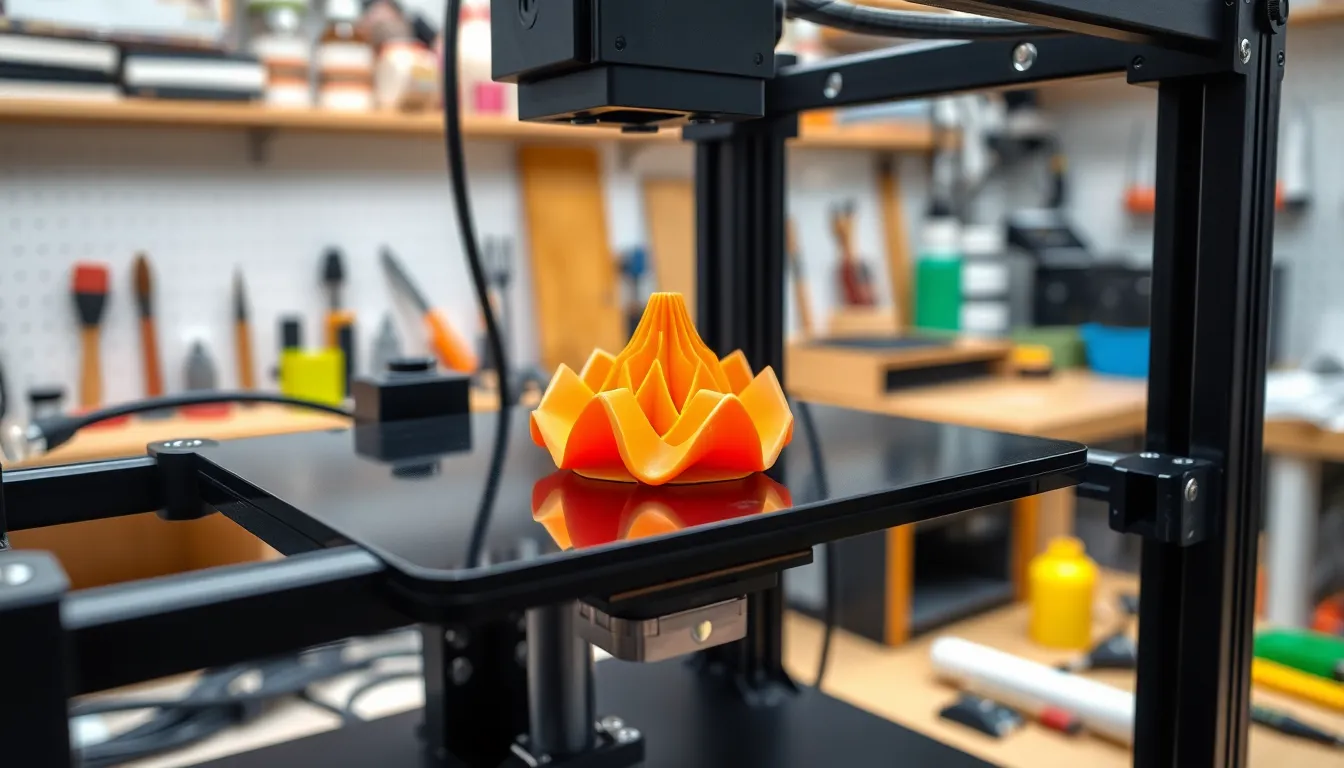
Additive manufacturing utilizes various technologies that play crucial roles in creating intricate 3D objects. These approaches include Fused Deposition Modeling, Stereolithography, and Selective Laser Sintering, each with unique strengths.
Fused Deposition Modeling (FDM)
Fused Deposition Modeling stands out for its simplicity and cost-effectiveness. This technique involves extruding thermoplastic filaments through a heated nozzle, which deposits material layer by layer. Industries appreciate FDM for rapid prototyping, offering quick turnarounds on designs. Common materials used include PLA and ABS, making it accessible for many applications. Users often choose this method for educational projects and hobbyist printing due to its affordability.
Stereolithography (SLA)
Stereolithography revolutionizes precision in additive manufacturing with its use of ultraviolet light to cure photopolymer resin. This method enables the creation of parts with smooth surfaces and intricate details. SLA printers work by projecting light patterns onto resin, solidifying the material layer by layer. The technology excels in producing detailed models, making it popular among industries requiring high accuracy, such as dentistry and jewelry design. Resin materials offer a variety of properties, expanding application possibilities.
Selective Laser Sintering (SLS)
Selective Laser Sintering leverages a laser to fuse powdered materials into solid structures. This process builds complex geometries without the need for support structures, allowing for intricate designs. SLS accommodates various materials, including nylon and metal powders, making it versatile for different industrial applications. Companies favor this method for functional prototypes and small production runs due to its ability to produce strong, durable parts. The technology continues to advance, enhancing its production capabilities and material options.
Applications of Additive Manufacturing 3D Printing
Additive manufacturing and 3D printing find broad applications across numerous industries. Their unique capabilities drive innovation and improve efficiency.
Aerospace Industry
The aerospace industry extensively utilizes additive manufacturing for producing lightweight components. Engineers leverage 3D printing to create complex geometries that enhance performance while reducing overall weight. This capability allows for significant fuel savings during flight operations. Notably, companies like Boeing incorporate 3D-printed parts into their aircraft designs to optimize structural integrity. Moreover, customization for specific design requirements becomes increasingly achievable, leading to improved aerodynamics.
Medical Applications
In medical settings, additive manufacturing transforms the creation of prosthetics and implants. Customized solutions tailored to individual patients’ needs become accessible, thus enhancing comfort and functionality. Surgeons use 3D-printed models to plan complex procedures, improving precision during operations. Additionally, bioprinting techniques enable the development of tissue samples for research and potential organ transplants, showcasing remarkable advancements in regenerative medicine. The use of these technologies promotes personalized healthcare, leading to better patient outcomes.
Consumer Products
Consumer products increasingly benefit from the capabilities of additive manufacturing. Designers and manufacturers produce unique items ranging from customized jewelry to tailored home goods. Rapid prototyping accelerates the development cycle, allowing companies to bring innovative products to market quickly. Companies such as Adidas utilize 3D printing to create personalized footwear designs, enhancing customer experience. Furthermore, the use of sustainable materials in production aligns with growing consumer demand for environmentally friendly products, positioning businesses competitively in the market.
Benefits of Additive Manufacturing 3D Printing
Additive manufacturing offers numerous advantages across various sectors. Customization stands out as a primary benefit; it allows manufacturers to create tailored products that meet specific customer needs. Industries like healthcare and aerospace leverage this capability, producing items like personalized prosthetics and lightweight aircraft components.
Rapid prototyping showcases another key advantage. Concepts can transition from design to physical form quickly, drastically reducing development time. For instance, automotive companies utilize this feature to iterate designs, ensuring efficiency in vehicle production.
Moreover, material efficiency plays a vital role in the manufacturing process. Unlike traditional methods that cut away from solid blocks, additive techniques create objects layer by layer. This approach minimizes waste, contributing to sustainability efforts.
Furthermore, additive manufacturing supports intricate designs that traditional methods struggle to achieve. Complex geometries that enhance performance and aesthetics become feasible, enabling innovation in products across sectors. Stereolithography and Selective Laser Sintering enable the production of detailed models and functional prototypes, respectively.
Cost reduction also deserves mention. The ability to produce parts on demand eliminates the need for large inventory supplies, thus saving storage costs. Small and medium-sized businesses particularly benefit from this financial flexibility, making 3D printing a viable option for a broader market.
Lastly, the technology promotes localized production. By manufacturing parts closer to the end-users, companies decrease shipping costs and delivery times. This improvement aligns with the growing demand for efficiency and responsiveness in supply chains.
Challenges and Limitations
Additive manufacturing faces several challenges that can impact its widespread adoption. First, speed constraints exist when scaling production for large components. While 3D printing excels in creating intricate designs, producing high volumes remains time-consuming compared to traditional methods.
Material limitations also pose significant hurdles. Some available materials may not offer the same mechanical properties as those used in conventional manufacturing. Although researchers are exploring new composite and metal options, the range of usable materials remains narrower than in traditional production.
Costs can be a barrier too. While initial investment in 3D printing technology can be high, ongoing operational costs significantly affect profitability. Many manufacturers find it challenging to balance expenses with the benefits of rapid prototyping and customization.
Quality control issues arise during the printing process. Variability in temperature, printer calibration, or material inconsistencies can lead to defects in printed products. Ensuring consistent quality across multiple prints demands robust monitoring systems and expertise in troubleshooting.
Regulatory hurdles may impede progress within some industries. Compliance with safety standards and certifications can slow down innovation, especially in sectors like aerospace and healthcare. To navigate these challenges, manufacturers often need extensive testing and validation to meet industry regulations.
Lastly, intellectual property concerns emerge as 3D printing technology grows. Copying designs quickly becomes a digital process, raising questions about ownership and patents. Protecting innovative designs remains essential, leading to a complex legal landscape.
The combination of these factors can limit the potential of additive manufacturing, necessitating ongoing research and development. By addressing these challenges, industries can enhance the effectiveness of 3D printing and broaden its applications.
Additive manufacturing and 3D printing are reshaping the landscape of production across multiple industries. This technology not only streamlines the manufacturing process but also fosters innovation and creativity. By enabling rapid prototyping and customized solutions, businesses can respond swiftly to market demands while minimizing waste and energy consumption.
As research continues to address existing challenges, the potential for growth in this field remains vast. With advancements in materials and techniques, additive manufacturing is poised to play an even more significant role in the future of design and production. Embracing this technology will be crucial for companies aiming to stay competitive and sustainable in an ever-evolving marketplace.

